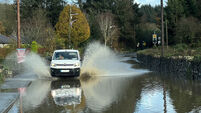Lack of birth-defects register a threat to health

The HSE’s Public Health Medicine Environment and Health Group claims the absence of such a register represents “a serious deficit in the infrastructure required to define and assess potential threats to public health from environmental factors”.
It said a national register was essential as an early warning for teratogenic hazards — chemicals, medications, and infections that can damage a developing foetus.
The group claims such a register is also the internationally accepted method for spotting trends in congenital anomalies, as well as for monitoring and evaluating the effectiveness of prevention programmes.
Birth defects are a major cause of infant mortality, childhood disease, and long-term disability, and occur in 2%-3% of all live births and between 14% and 24% of stillbirths.
Factors that can cause congenital anomalies are maternal illnesses, infectious diseases, folic-acid deficiency, exposure to certain medicines, recreational drugs, including alcohol and tobacco, and some environmental chemicals.
In a new position paper on the need for a national register, the HSE group claims there is only limited coverage of congenital anomalies in the Republic.
There are three active regional registers in the Republic — the greater Dublin region, Cork/Kerry, and the South-East — which cover 60% of all births.
Efforts to set up registers in the North-East and Midlands have not been successful.
“Even within covered areas, there is variable completeness of data,” the group said.
“This devalues the information from the congenital anomalies registers and leaves Ireland at risk of missing early signs of emerging threats, such as microcephaly from Zika virus.”
The HSE group said there was an urgent need to monitor incidence of microcephaly — a condition where the baby’s head is smaller than normal.













